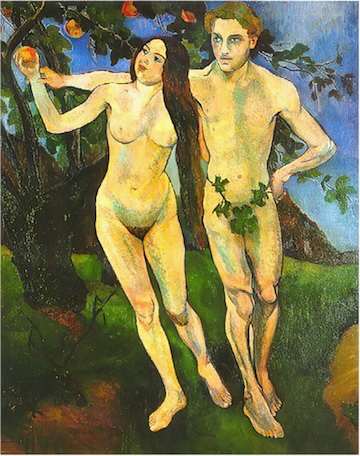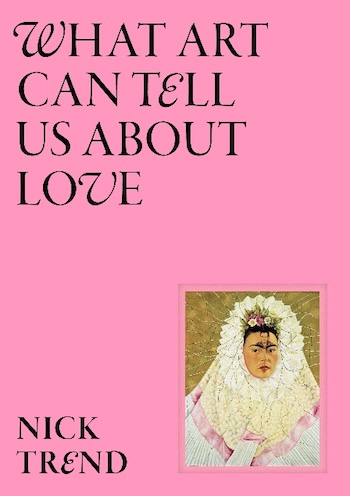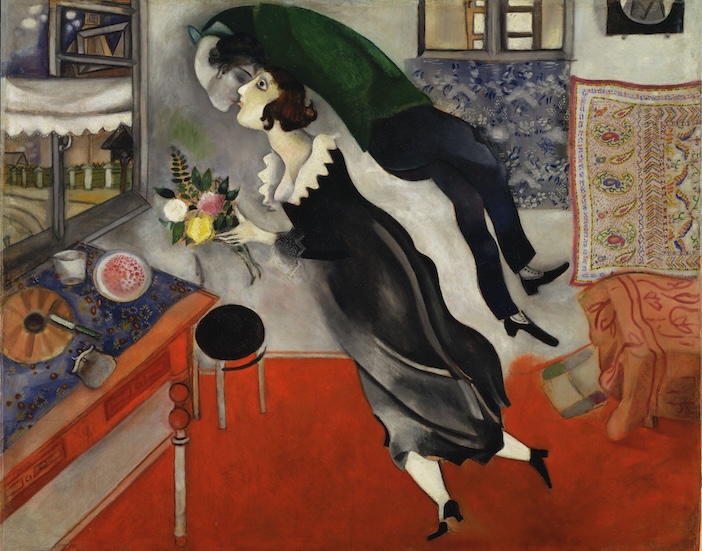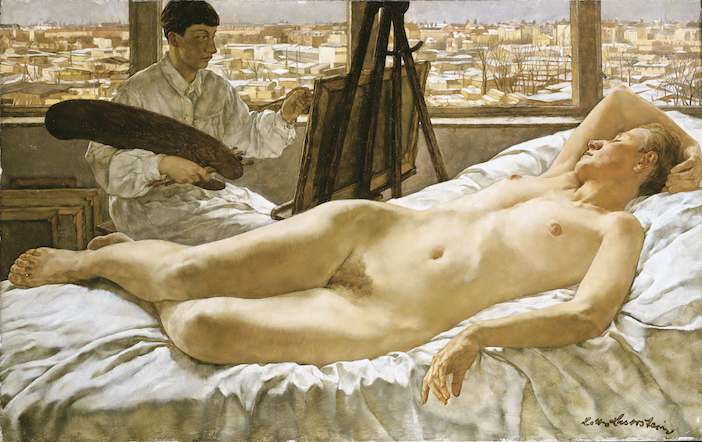This is an intriguing question. What can art tell us about love? It’s a question examined and, you might say, answered by Nick Trend, art historian and Culture Editor of The Daily Telegraph. In this, his second book after ‘Art Firsts’ covering thirty pioneering works, he turns his attention to the liaisons between artists in a diversity of relationships, from the enduring love of couples like Marc and Bella Chagall, Georgia O’Keeffe and Alfred Stieglitz to the love triangle of Niki de Saint Phalle, Harry Mathews and Jean Tinguely; and serial lovers like Pablo Picasso.

Suzanne Valadon ‘Adam and Eve’, 1909 (Photo: Alamy Stock Photo)
Add in the passionate relationships between Lee Miller and Man Ray, or Francis Bacon and George Dyer, and one soon realises that Trend has authored a book of love stories, and how love can be fulfilled in different circumstances. Anyone who has experienced being in love will recognise if it was unrequited, or the real thing, leading to the elation, the anguish, the excitement, and the contentment of sharing your life with a person you love.
Trend, a self-confessed romantic, has chosen seven categories within which to create his narrative. This is a book that relates to people, how relationships are formed to survive or die, from first meetings to last embraces. For first-time relationships in Christian narratives Adam and Eve began it all, and French artist Suzanne Valadon picked up on this in her painting Adam and Eve, from 1909, with herself as naked Eve, holding hands with her younger lover – later her second husband – the painter André Utter, naked as Adam. In a near-life size composition they walk side by side close to an apple tree. He grips her wrist while she holds an apple. Is he encouraging her to take the fruit, or stopping her?
In the original painting both were depicted naked but Trend explains that a strand of fig leaves was added across Utter’s lower body to allay criticism during its public display at the Paris Salon in 1920. He comments that it is a depiction that carries contradictory meanings with ‘ideas of betrayal, shame and rejection, but also loyalty and devotion’. The composition goes beyond the story of the original couple. Valadon looks radiant, happy, Utter looks ahead. Who is he looking at? What is he thinking? Did they stay together? Trend reveals their life story to add colour and context to the depiction in the painting.
 This pocket-sized book’s bright pink cover includes detail from a portrait of the Mexican artist Frida Kahlo and, inside, in ‘Mind Games’, there is a double portrait of Kahlo and her Mexican husband Diego Rivera, the muralist painter. It was created by Kahlo in 1931, two years after their marriage. On this work she painted a dove carrying a message, ‘Here you see us, me Frida Kahlo, together with my beloved husband Diego Rivera’. Was it a life-long rapport? Not exactly. Theirs was a tempestuous love. The cover portrait Self-Portrait as a Tehuana (or Diego on My Mind),1943, depicts a mini portrait of Diego on her forehead. In this very Freudian depiction, Trend explains the connotations through fascinating, and clearly diligent, research.
This pocket-sized book’s bright pink cover includes detail from a portrait of the Mexican artist Frida Kahlo and, inside, in ‘Mind Games’, there is a double portrait of Kahlo and her Mexican husband Diego Rivera, the muralist painter. It was created by Kahlo in 1931, two years after their marriage. On this work she painted a dove carrying a message, ‘Here you see us, me Frida Kahlo, together with my beloved husband Diego Rivera’. Was it a life-long rapport? Not exactly. Theirs was a tempestuous love. The cover portrait Self-Portrait as a Tehuana (or Diego on My Mind),1943, depicts a mini portrait of Diego on her forehead. In this very Freudian depiction, Trend explains the connotations through fascinating, and clearly diligent, research.
Art lovers may know of the passionate love the Surrealist painter Marc Chagall had for his wife Bella Rosenfeld, depicted in many paintings, such as The Birthday, painted in 1915 to celebrate his birthday and their forthcoming marriage. Trend includes Bella’s reaction on meeting Marc for the first time as a premonition of love and ‘a sense of weightlessness as they part’.

Marc Chagall, ‘The Birthday’, 1915 (oil on cardboard) Museum of Modern Art, New York (Photo courtesy of Bridgeman Images)
It is in contrast to the painting Observatory Time, The Lovers (main picture), with the floating ‘disembodied lips’ of war reporter and photographer Lee Miller, painted by her lover Man Ray after she ended their three-year affair. Distraught at their separation he saw the lips as two bodies embracing. The highly charged eroticism of American photographer Alfred Stieglitz’s 1918 photograph of his younger lover, the painter Georgia O’Keeffe revealed their private intimacy later exhibited with other portraits of her in his gallery shows.
Depicting an emotive, ethereal condition, how does an artist capture the ‘look’ of love? Trend chooses Rembrandt, the master of portraiture, whose ability to capture intimacy in his drawings and paintings could be done in the most subtle ways. The portrait of Rembrandt’s mistress, Hendrickje Stoffels, captures her look of tenderness at him, the painter. Trend points out that in every portrait there are two people, the sitter and the unseen artist.

Lotte Laserstein ‘In Meinem Atelier’, 1928 (© DACS 2024 Photo Lotte Laserstein Archiv Krausse, Berlin)
Trend also explores more stimulating, physical examples, including secret affairs, as Berlin-born painter Lotte Laserstein depicts in 1928’s In My Studio, portraying her lover Traute Rose lying naked on a bed while Laserstein sits at an easel painting her. And there are some connections that may be less well known, bringing together the seductive naked females of The Turkish Bath, by French painter Jean-Auguste-Dominique Ingres, with a group of naked males in the more contemporary The Turkish Bath, painted by British artist, the feminist Sylvia Sleigh. Her lover Lawrence Alloway lies naked in the foreground, and in something of a role reversal, she saw it as a chance for women to enjoy male nudes.
This, and near-thirty other remarkable relationships depicted in art, are unveiled with fascinating insights in Trend’s book; insights that add far more than academic understanding that contribute to one’s appreciation of these artists’ great works.
What Art Can Tell Us About Love by Nick Trend is released in hardback on 13th March 2025, by Laurence King Publishing. For more information, please visit www.laurenceking.com.




